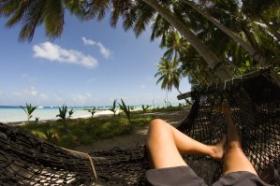Spicing Up Down Time
Try this writing exercise as a family: we call it pass-it-on story time. Everyone sits down together, each person with a sheet of paper and pencil. After a minute of quiet thinking, everyone begins to write a story – any story. After two minutes, each person passes their paper to the left and receives a story from the right. Now each writer gets two minutes to continue the broken-off story they just received. What will the mischievous boy do next? Where do the adventurous bats fly to for their next adventure? Just how will Grandma make it out of her sinking submarine? It’s amazing how quickly these stories can snowball and take wild, unexpected turns! Continue until each story has been contributed to by each person. During the last round, writers must be sure to conclude the eclectic stories (allow a little extra time if needed). Then it’s time to read the results aloud. Our sessions usually end in hearty laughs, with a good time had by all doing something far more interesting than watching TV. This activity reinforces important writing skills: recognizing the parts of a story, connecting ideas, and above all, creative writing. Very young children can participate by partnering with an older “scribe.” You can also turn this into a verbal exercise on the road, each person adding two sentences to a single story that can take countless twists and turns as you meander down the highway.
Planning a long car trip during your next holidays? There are, of course, old stand-by games like “I spy" and number plate searches. But what about going one step further and doing an easy activity that hones mathematics skills? Have your children tally something of interest to them: trucks, for example, or birds, or colors: how many of each kind do you see? Make sure the kids put some thought into defining distinct categories. Will they tally by truck manufacturer or by the number of wheels? Then you’re off, tally sheet in hand. Instead of being bored, the kids will have an activity to keep them tuned into their surroundings with a specific task. At your next rest stop or destination, pull out colored pencils and paper to graph the results. A simple bar graph will do for younger kids; a composite bar graph is more challenging for older children. It doesn’t have to be a work of mathematical perfection to reinforce skills learned in school (but remember, a good graph comes with labeled axes and a title).
Collecting, displaying, and analyzing data are also important aspects of scientific studies. Have kids summarize their findings in words. Why do they think a certain truck type predominates? Would the highway show a different “population” of vehicles mid-week than on a weekend? You can even repeat the study on the return trip to see if repeat observations bring similar results, something every good scientist does. This exercise takes only a few minutes to prepare and graph, yet will keep the kids occupied for a long time.
Then there’s the old vinegar and baking soda experiment, sometimes called a “volcanic eruption” – a promising name if ever there was one! There are many ways to turn this into a fun science experiment and family activity. (Simply add one teaspoon of baking soda to a bowl containing 4 tablespoons of vinegar. Since baking soda is a base and vinegar is an acid, they react in a very pleasing “eruption” of bubbles and foam, indicating the release of carbon dioxide. It can be done just about anywhere with minimal set up.) Run through the experiment once, either for your first time or as a refresher. Next, turn that short-lived special effect into a full hands-on lesson by baking muffins with your children or grandchildren. Yes, muffins! Use any recipe that includes baking soda and an acid ingredient like lemon juice, or baking powder (which is baking soda pre-combined with an acidic ingredient like cream of tartar). As you munch on the tasty results, examine the inside of the muffins: you’ll see tiny air pockets which result from the “bubbling” observed in the original experiment. Yes, the kitchen is a great place for both cooking and chemistry!
These are just a few ideas for turning slow times into a fun, focused family activity. Older siblings can help younger children and “lessons" can take place just about anywhere, with minimal preparation and set up. There’s no better way to learn than having fun!
(Note: I was invited to share a blog post with a blogger of a major Australian family website, and so I wrote this article for them. Little did I know they would fail to publish it under my name! I'll chalk it up as a lesson learned, I guess.)
